8 Great Ways to Increase Average Order Value in 2024
- January 11, 2024
- 15 mins read
- Listen

Table of Content
In the fast-paced online market, imagine boosting the worth of the orders already pouring into your store. That’s why it’s crucial to explore ways to increase your Average Order Value (AOV). AOV is a handy metric to keep an eye on as your business grows. Typically, it’s one of the first numbers that business owners look to enhance to boost revenue and optimize their return on advertising investment. The idea is simple: if you can encourage customers to spend more money per order, your overall earnings will increase, right? Hold on a second. Like many important metrics, AOV has its limitations. In the following discussion, we’ll explore how to approach your AOV and uncover strategies for increasing it. These methods not only lead to higher revenue but also contribute to increased profitability.
What is the Average Order Value (AOV)
Average Order Value (AOV) is the cool tool that tells you how much money, on average, people splash out each time they shop on a website or in an online store. It’s like a spending report card for a specific time frame.Picture this: If your store rakes in $3,000 from 100 orders, your Average Order Value (AOV) is $30. That means, on average, each customer shells out $30 when they hit the ‘buy’ button.AOV isn’t just a big picture thing; you can zoom in on specific products or services, channels, or geographic regions. Companies use it to spy on customer habits, see which sales tricks work, and figure out how to make more money.Take a peek at it over time too! Compare this year’s AOV with the last or see how different ads or sales pitches mess with the AOV. By grasping the process of calculating AOV and identifying the factors that sway it, businesses can make moves to boost their average order value and enhance their overall profits.How to Calculate Average Order Value (AOV)
The Average Order Value (AOV) is a simple way to figure out how much, on average, customers are spending per order. You can find it by dividing the total revenue for a specific period by the total number of orders during that time.Here’s the math behind it: Remember, AOV is all about the revenue per order, not per customer. So, if your monthly revenue is $4,000 from 100 orders, that means each order, on average, is worth $40 that month.But be cautious! Sometimes, a few big orders or very small ones can make the AOV look different from what you might expect. To get a more accurate picture, it’s smart to dig deeper into the data. You can check for any extreme values that might be pulling the average in one direction or another. Segmenting the data can also help you understand better what’s influencing the AOV calculation.Now that you’ve got the basics of AOV, let’s explore it a bit more!
Remember, AOV is all about the revenue per order, not per customer. So, if your monthly revenue is $4,000 from 100 orders, that means each order, on average, is worth $40 that month.But be cautious! Sometimes, a few big orders or very small ones can make the AOV look different from what you might expect. To get a more accurate picture, it’s smart to dig deeper into the data. You can check for any extreme values that might be pulling the average in one direction or another. Segmenting the data can also help you understand better what’s influencing the AOV calculation.Now that you’ve got the basics of AOV, let’s explore it a bit more!Increasing Average Order Value: Benefits
You might be wondering why we’ve chosen to focus on average order value in this blog.Why is the AOV so important?To put it simply, a higher AOV means you can generate more revenue from the same number of customers. This allows you to increase your earnings without having to ramp up your spending on marketing and sales. Optimizing AOV provides marketers with an additional strategy to fuel business growth. Now, let’s look into some of its major benefits!-
Boost Your Earnings and Make More Profit
-
Optimizing Your Marketing Investment
-
Enhanced Customer Lifetime Value
-
Move More Products
How to Increase Average Order Value: 8 Strategies & Examples
So far, we’ve seen how AOV can seriously boost your profits. But here’s the burning question we haven’t tackled yet: “How do you get your customers to keep coming back and spending more or in simple terms, how to increase average order value?”Well, that’s exactly what we’re going to explore today. There are a bunch of strategies to make this magic happen, so don’t go anywhere – keep reading to find out more!1. Cross-Selling
Here the trick is all about popping some product suggestions onto your product page. But here’s the twist: instead of just throwing out other popular stuff from your store, go the extra mile. Pick out items that go perfectly with what’s already in the user’s cart – like accessories or add-ons. Think of a matching purse for a dress or artificial flowers for a vase. It’s all about making those extras look like a match made in shopping heaven!Now, let’s check out an example from Amazon. I chose a flower vase and tossed it into my cart. Right away, Amazon jumped in with suggestions for related items, like pebbles and dried flowers that I could grab along with the vase. It’s a neat demonstration of cross-selling in action and one of the great ways to increase AOV.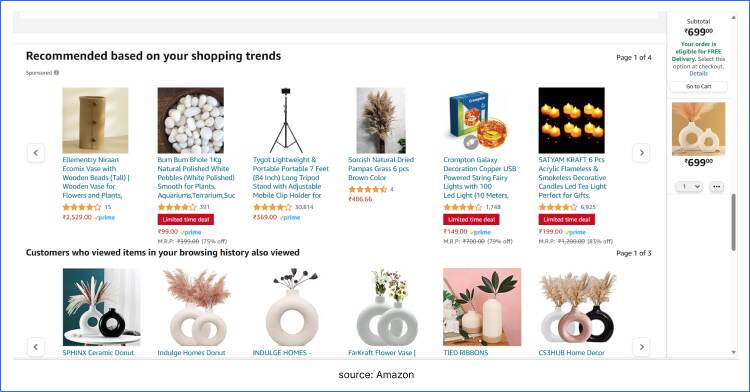 Pro Tips:
Pro Tips:- Recommend items that naturally complement the customer’s initial purchase. Think about what goes well together or enhances the main product’s utility.
- Showcase cross-sell suggestions prominently on the product page or during the checkout process.
- Create a sense of urgency by introducing limited-time offers on complementary products.
- Feature positive reviews or testimonials about the suggested cross-sell items to build trust and confidence in the additional purchase.
2. Package Deals or Bundling
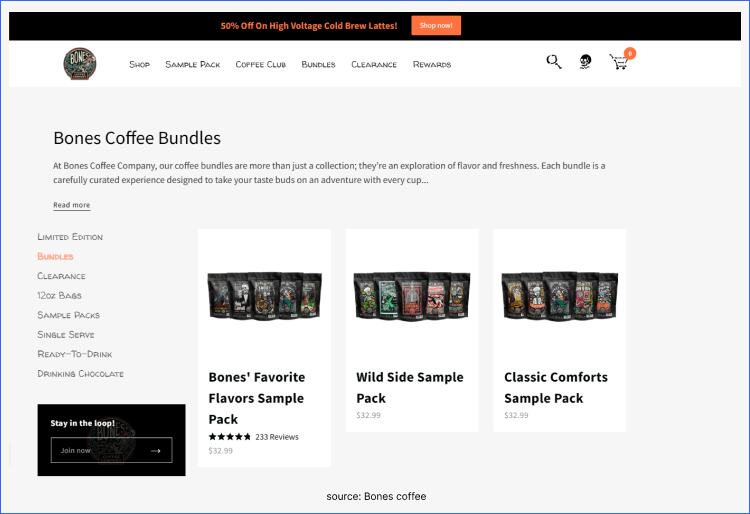 Pro Tips:
Pro Tips:- Bundle products that naturally complement each other or are frequently purchased together. Create combinations that provide additional value to the customer.
- Offer a slight discount when customers purchase the bundle compared to buying each item separately.
- Communicate the benefits of the bundle, such as cost savings, convenience, or enhanced functionality. Ensure that customers understand the value they receive by opting for the bundled package.
- Introduce bundles based on seasons, holidays, or specific themes. This adds a sense of excitement and urgency, encouraging customers to make a purchase.
- Create a sense of urgency by making some bundles available for a limited time.
3. Upselling
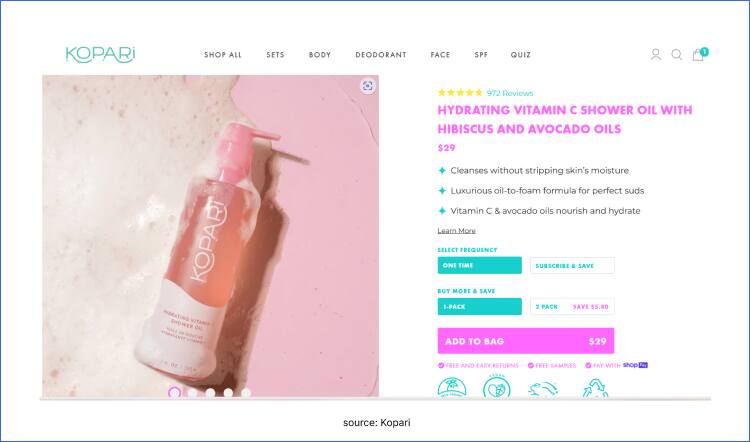 Pro Tips:
Pro Tips:- Tailor your up-selling strategy to the customer’s preferences and needs.
- Communicate the additional benefits or features that come with the upgraded or higher-priced option.
- Offer a discounted rate when customers opt for a larger quantity or an upgraded version.
- Provide information about why the up-sell is beneficial. This could include demonstrating how the upgraded product delivers enhanced performance, durability, or additional features.
- Leverage customer data and purchase history to make personalized up-selling recommendations. Show them products that align with their previous choices.
4. Bulk Purchase Options
 Pro Tips:
Pro Tips:- Communicate the cost savings associated with bulk purchases. Use effective messaging to highlight the advantages of buying more units, emphasizing the overall value.
- Introduce limited-time offers or promotions for bulk purchases to create a sense of urgency.
- Encourage customers to subscribe to regular deliveries by offering additional discounts for committing to a specific quantity or duration.
- Include a free item or extra product when customers opt for bulk purchases.
- Clearly display the cost savings calculations for customers, showing them exactly how much they save by choosing the bulk purchase option.
5. Tiny Extras
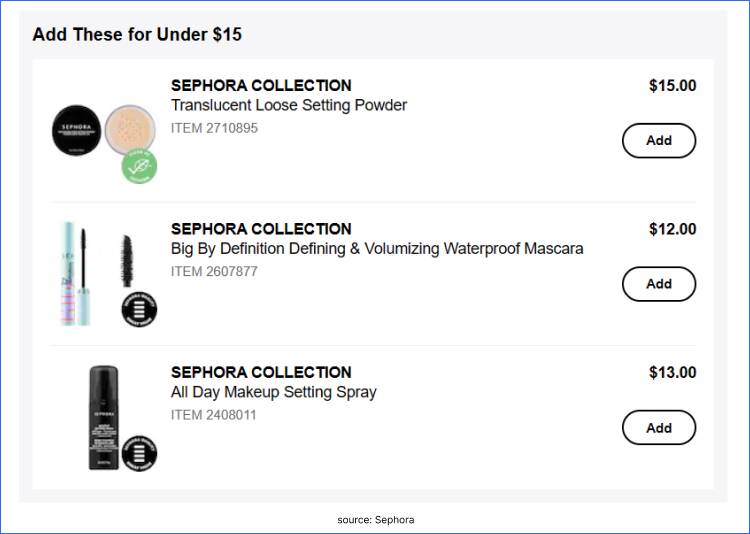 Pro Tips:
Pro Tips:- Ensure that tiny add-ons are directly related to the main product being purchased. The more relevant they are, the more likely customers will see value in adding them to their orders.
- Feature tiny add-ons prominently during the checkout process or on product pages.
- Use informational pop-ups or tooltips to briefly explain the benefits of tiny add-ons.
- Include a free tiny add-on as a sample with the main purchase. This not only adds value for the customer but can also lead to future purchases of the featured tiny add-on.
- While promoting tiny add-ons, make it just as easy for customers to remove them from their cart. This transparency ensures that customers feel in control of their choices.
6. Offer Quick Assistance through Live Chat and Chatbot
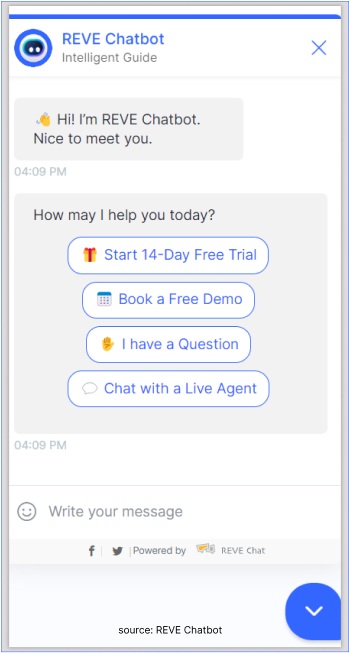
7. Customer Loyalty Program
A significant portion, 71% to be precise, of consumers consider loyalty programs to be an important aspect of their connections with brands.If you haven’t tried it yet, we suggest beginning with an easy-to-manage loyalty program. It’s a win-win! Your customers will appreciate it, and in return, you’ll see a boost in spending from those who use loyalty points for purchases. When setting up a loyalty program, make sure the rewards make sense for your brand. Your points and tiers should be tempting enough for customers without hurting your profits. Keep it sweet for them and smart for you!Claire’s, the cool accessory store for teens, just kicked off an awesome loyalty program! If you’re a Claire’s loyalty member who signed up for emails, you’re in for a treat. Buy a piercing starter kit in-store, share your email at checkout, and voilà! You get a free pair of earrings every month for a whole year. Sweet deal, right? Pro Tips:
Pro Tips:- Offer special perks or discounts for customers who reach different loyalty tiers.
- Create urgency by occasionally offering bonus loyalty points for a limited time.
- Provide incentives for customers to try higher-priced items or related products.
- Reward your loyal customers with exclusive access to flash sales or time-limited promotions.
- Celebrate your customers’ birthdays with special discounts or bonus points.
8. Free Shipping Eligibility
 Pro Tips:
Pro Tips:- Carefully analyze customer behavior, product margins, and competitive landscape to set a free shipping threshold that encourages increased spending without discouraging purchases.
- Clearly display the free shipping threshold on your website, preferably on the homepage and during the checkout process.
- Consider implementing dynamic free shipping thresholds based on factors like customer segments, purchase history, or current promotions.
- Introduce occasional promotions where the free shipping threshold is temporarily lowered or eliminated for a specific period.



